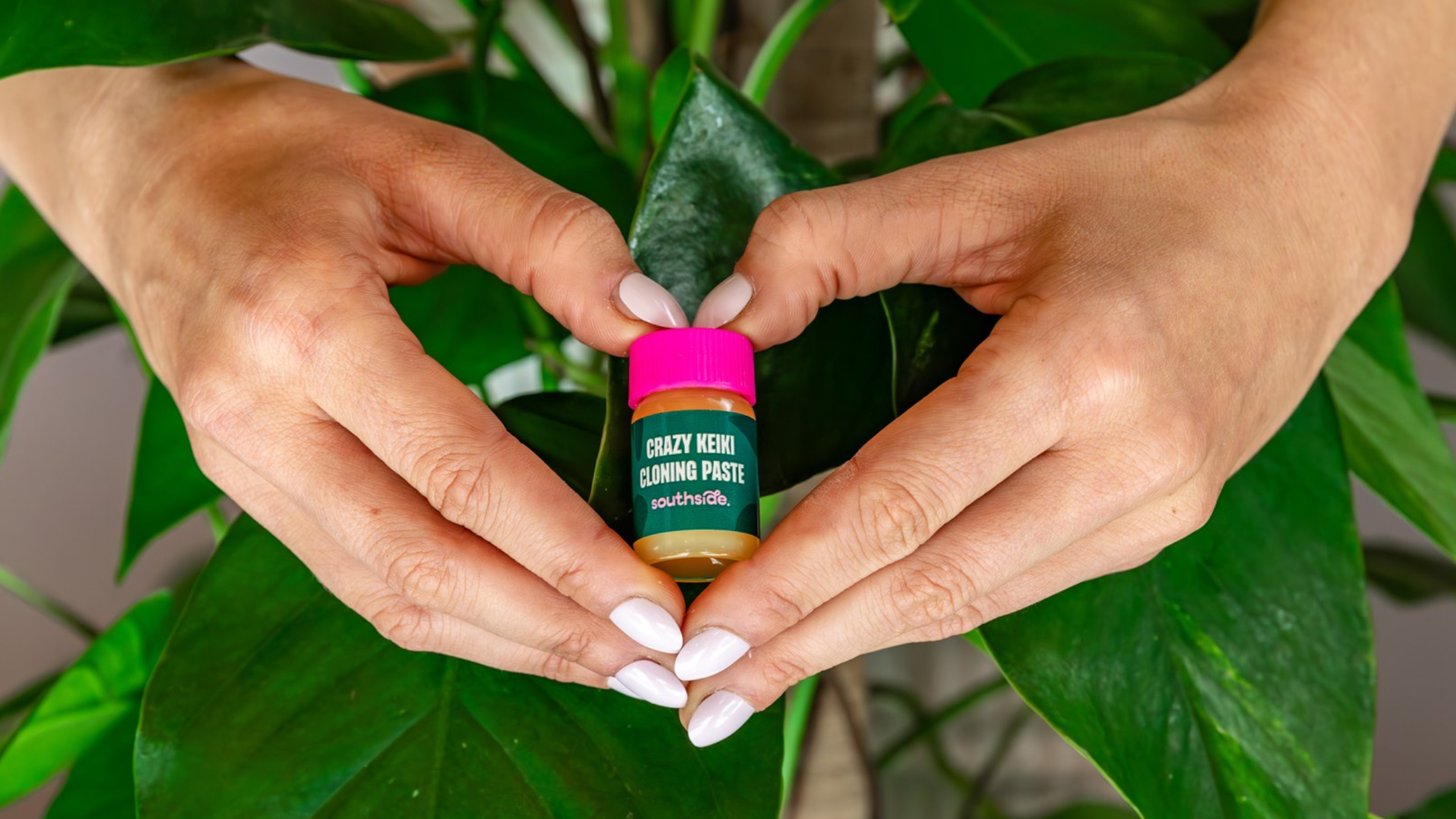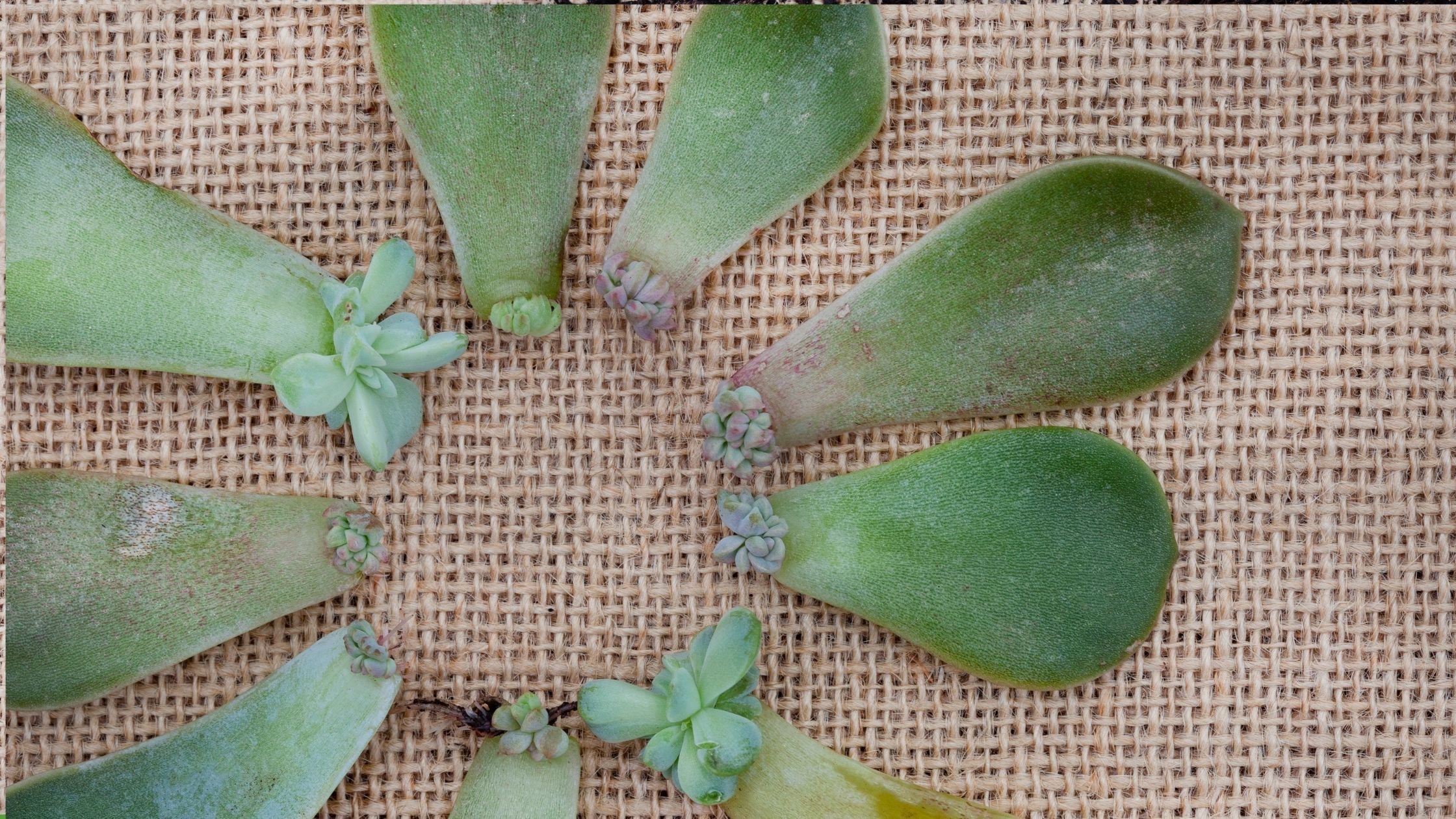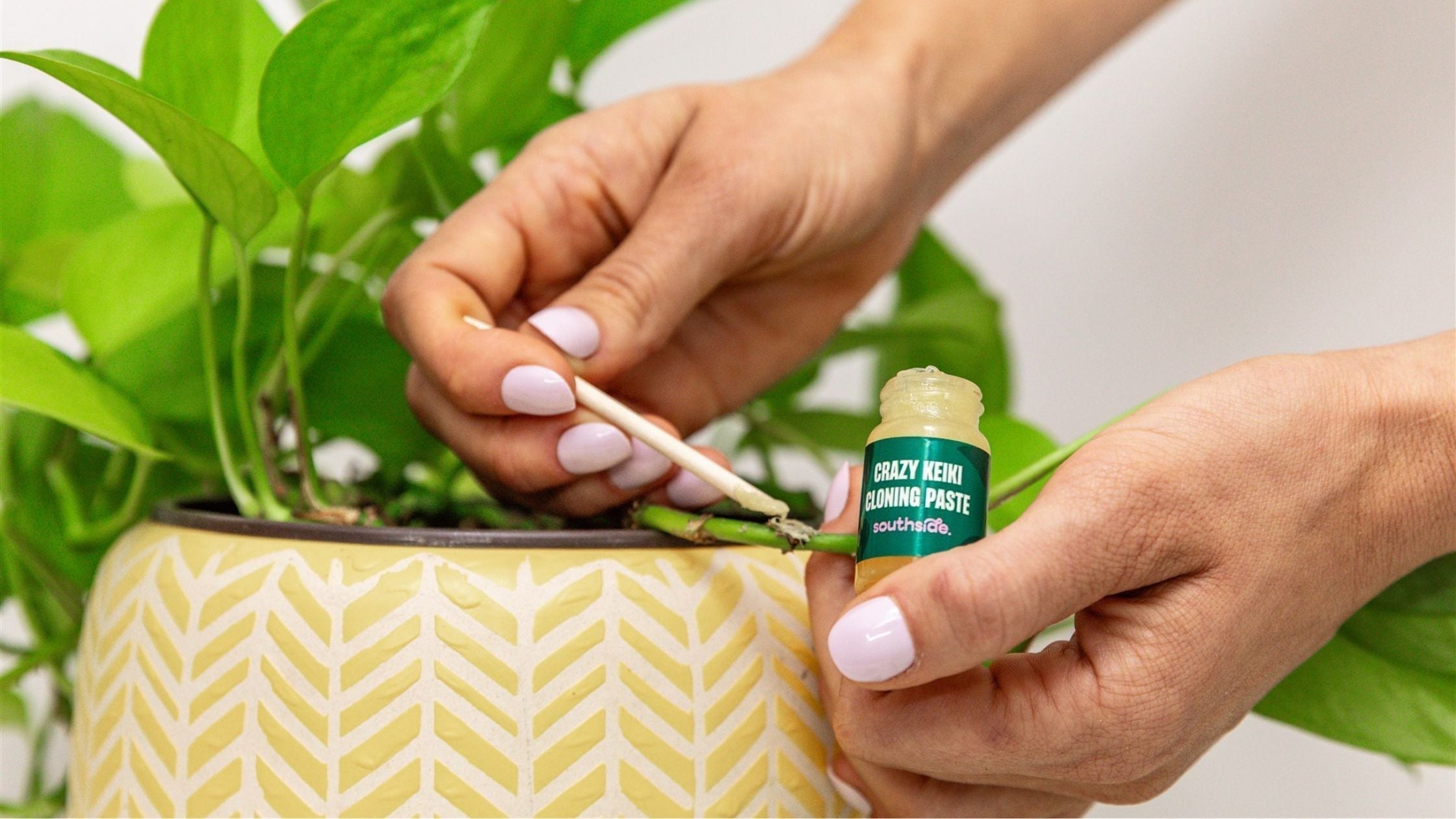
What is Keiki Paste?
What is Keiki Paste? The Ultimate Guide
Table of Contents
- The origins of Crazy Keiki Cloning Paste
- What are the Ingredients in Keiki Paste?
- Keiki Paste for Orchids
- Can You Use Keiki Paste on Other Plants Besides Orchids?
- How to Apply Keiki Paste
- How Long Does It Take for Keiki Paste to Work?
- How Often Do I Have to Apply Keiki Paste?
- How Does Keiki Paste Work? The science-y stuff
- When Does Keiki Paste Not Work?
- Is Keiki Paste Safe for Pets and Kids?
Keiki Paste is a fun and easy way to encourage new shoots on orchids or just about any healthy plant. Keiki paste is applied to specific parts of the plant called nodes, where it delivers targeted nutrients to help support natural growth.
Keiki means child or offspring in Hawaiian. Keiki paste is aptly named because it helps create new baby shoots from the parent plant.
With our trademarked cloning paste and thousands of happy fans, we consider ourselves THE experts on all things keiki, so let us be your guide on everything you need to know to use keiki paste on your beloved orchids and houseplants.
Now that we’ve answered the question - What is keiki paste? - let's go deeper…
The origins of Crazy Keiki Cloning Paste
Made in the USA, Southside Plant’s Crazy Keiki Cloning Paste was formulated by our founder - an orchid hobbyist, houseplant lover, and biologist. She started off with some grocery store orchids, began collecting rare specimens, and soon started to wonder how she could grow her own.
It turns out that growing an orchid from seed is a long and tedious process that requires specific temperatures, humidity, and sterile conditions. So she got curious… How can someone - not in a special laboratory greenhouse - encourage an orchid to grow a new plant at home?
That’s when she discovered the art of propagating orchids through their nodes.
This method is much easier, faster, and more satisfying than growing from seed. And with the help of a nutrient-rich paste like ours, you can try it at home too.
What are the Ingredients in Keiki Paste?
What is in keiki paste? In its simplest form, it’s a thick, waxy blend made from lanolin and other ingredients selected to support plant care at the node level. Adventurous DIYers have been known to whip up their own versions, but the original, trademarked Crazy Keiki Cloning Paste was developed through years of experimentation with houseplants and orchids. Its carefully crafted formula is designed to stay in place, protect delicate growth sites, and provide targeted nutritional support.
Here’s how the ingredients work together:
Lanolin – This natural wax, derived from sheep’s wool, creates a sticky, water-resistant base that holds the paste exactly where you apply it. It helps protect tender areas from environmental stress and provides a stable environment for new shoots to emerge.
Supportive nutrients – The formula also includes a proprietary blend of vitamins and plant-friendly compounds designed to complement your plant’s natural ability to produce new leaves and stems. These nutrients help condition the node area and keep it supported during the early stages of growth.
Whether you’re applying it to an orchid spike or a leaf node on a vining plant, Crazy Keiki Cloning Paste delivers what the plant needs—right where it matters.

Keiki Paste for Orchids
Whether you like to grab an orchid from the grocery store occasionally or you're a collector of rare specimens, keiki paste can take your love for this beautiful tropical flowering plant to a new level.
While it's not an exact science, where you put keiki paste on the flower spike (the stalk) may influence whether you get new blooms or a new shoot. Apply keiki paste on nodes higher up on the spike to potentially support more blooms, and lower down on the leaf nodes if you want to try encouraging a keiki.
When a keiki is left on its parent plant, both may bloom in sync, creating a spectacular display within about two years. Alternatively, your keikis can be replanted to diversify your orchid collection or shared as unique gifts.
If you choose to grow a new plant from your orchid, once the keiki starts to grow aerial roots about 1–3 inches long, you can remove it by gently cutting it an inch or two down its new stalk. Repot in the same substrate that you would use for any orchid. While it’s not mandatory, it’s often helpful to repot the keiki with its mother for the first year to help maintain the right conditions of moisture.
Go here for a step-by-step photo tutorial for how to grow orchids with keiki paste.
Can You Use Keiki Paste on Other Plants Besides Orchids?
YES! You can apply keiki paste to the node of just about any plant with above-ground nodes to support new foliage. Try it on a leggy vine like a Pothos or a succulent like a donkey tail or string of pearls to fill in some of those empty areas. Got a rubber tree or fiddle leaf fig with a bald spot? As long as your plant is healthy and growing, keiki paste can work its magic.
See our tutorials using keiki paste on many different plants here, or check out all the videos of customers loving keiki paste on Instagram!
How to Apply Keiki Paste
To use keiki paste on your orchid or houseplant, first locate a node. Nodes are small bumps where new leaves or stems emerge from a plant. They often look like joints along the stem or trunk. You’ll want to find a node that no longer has foliage.
Gently score the node with a clean safety pin or sharp knife. A light scratch or tiny notch is all that’s needed to help the paste stay in place. Next, dip a cotton swab or toothpick into the keiki paste. Lightly dab a small amount - about half the size of a pea - onto the scored node.
For a more extensive tutorial read this: How to Apply Keiki Paste

How Long Does It Take for Keiki Paste to Work?
After applying keiki paste to a scored node of your orchid or houseplant, you may begin to notice signs of growth within one to three weeks. This timeline can vary depending on the health of the plant, the species, and growing conditions. Be patient – every plant is different!
How Often Do I Have to Apply Keiki Paste?
You only need to apply keiki paste once to a plant node. The lanolin-based paste is water resistant, so it won’t wash off easily. Now, sit back and wait for the magic to happen.
When Does Keiki Paste NOT Work?
While keiki paste seems pretty miraculous, it isn’t a magic wand for all your plant goals. For starters, it’s not intended for rooting cuttings - you’ll need a different product for that.
More importantly, keiki paste won’t fix deeper plant problems. The health of the parent plant is key. If your plant isn’t getting enough light, water, or nutrients, it may not have the energy to support new shoots. Proper care always comes first.
If you have a leggy vine, it’s worth asking why it’s leggy before trying to fill it out. Does it need better light? More consistent watering? A fresh pot?
If your rubber plant or fiddle leaf fig is dropping leaves or otherwise stressed, it’s best to focus on improving its overall care before applying anything. Keiki paste is a clever plant-care tool, but it won’t compensate for poor growing conditions.
Also keep in mind - wherever you apply keiki paste, you're essentially inviting the plant to direct its energy there. Be selective with where you apply it so your plant can focus on growth where it matters most.
Is Keiki Paste Safe for Pets and Kids?
Yes! Keiki paste is safe to have around the house. The main ingredient that gives it that waxy yellow texture is lanolin, which comes from sheep’s wool and is non-toxic. In fact, lanolin is so gentle that breastfeeding moms use it to soothe and protect chapped skin — and it’s safe for newborns in that context.
That said, it’s always best to keep non-food items out of reach of pets and children. Save your keiki paste for your orchids and houseplants.
Where can I buy keiki paste?
Several versions of keiki paste are available to plant lovers, but we may be a bit biased in saying that our Crazy Keiki Cloning Paste is the best. And over FOUR THOUSAND five-star reviewers agree.
We recommend buying your keiki paste here or on Amazon. You can also ask your favorite local plant shop if they carry it too!
Can you make your own keiki paste at home?
You can try! For those who enjoy a DIY challenge, it’s possible to make a version of keiki paste at home using lanolin and other powdered ingredients. Just keep in mind - it can get messy and requires a precise scale, gloves, and good ventilation.
If you're experimenting with homemade blends, do your research and handle all materials with care. Not all recipes use the right components, and without the correct balance, the results may fall short.
Prefer to skip the mess and guesswork? Our Crazy Keiki Cloning Paste comes pre-mixed and ready to use.
Give the gift of keiki
Need a unique gift under $20? Keiki Paste is perfect for the plant and orchid lovers in your life. It includes everything for an engaging plant project: a cute glass vial with paste, applicators, and a QR code that links to step-by-step instructions and detailed care info on our website.
It’s not only a fun home experiment but also an educational opportunity for kids to learn about plants in a hands-on way. So easy to use and super fun for adults and kids to monitor the seemingly magical growth of new plant “babies.”
Show us your keikis!
Now that you know how to use keiki paste to help your orchids and other houseplants thrive, we can’t wait for you to try it! See other fans' results on our Instagram and tag us — @southsideplants — with yours!
#crazykeikipaste
GET CRAZY KEIKI CLONING PASTE HERE




Leave a comment
This site is protected by hCaptcha and the hCaptcha Privacy Policy and Terms of Service apply.